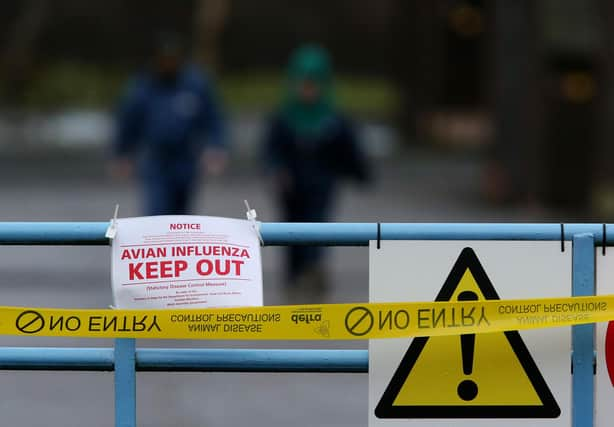Why government must act to stop ticking timebomb that is bird flu - Philip Lymbery


Scotland remains an epicentre of this once seasonal outbreak turned year-round phenomenon. But what will it take to turn things around?
It's a question that has become all the more pressing in the wake of a new run of outbreaks on poultry farms in Scotland. In the weeks to mid-August, confirmed cases were reported at premises in Aberdeenshire, Dumfries and Galloway, Highland, Isle of Lewis, and Moray.
Advertisement
Hide AdAdvertisement
Hide AdIn recent weeks, thousands of dead seabirds too have been removed from Scotland’s coastlines.
Birds both farmed and wild have become victims of this cruel disease. Globally since 2021, more than half a billion farmed birds have died or been culled due to bird flu. The toll on wild birds is likely to have been vast.
Although mostly affecting birds, spillover events, where the disease jumps the species barrier, has already happened in mammals.
Bird flu has also developed the ability to spread from one farmed mink to another – something it previously had not been capable of in mammals. This makes it far more dangerous. If it develops the same ability to spread between humans, it could become a real pandemic risk.
As Professor Devi Sridhar, chair of global public health at the University of Edinburgh, has said, “The more chances the virus has to jump into a human and mutate, the more likely it is a dangerous strain will emerge that could set off the next pandemic.”
Given the sheer scale of the problem, and the risk of it becoming much worse, the official response to the crisis so far could be characterised as ‘let’s keep an eye on it and hope it goes away’.
Environment minister, Gillian Martin recently launched the Scottish Government’s Response Plan to Bird flu. Writing for Grampian Online, she talks of tracking the disease to “improve our understanding” of the outbreak, before suggesting generally that allowing the disease to run its course is “the only option”.
It isn’t. We absolutely have other options that can help us head off this ongoing disaster.
Advertisement
Hide AdAdvertisement
Hide AdThese include an urgent mass vaccination programme throughout the entire poultry industry to slow the spread.
Farmers and planners also need to avoid having large concentrations of poultry in one place. We must stop building rows of warehouse-like poultry sheds, each containing many thousands of chickens, which create the conditions for harmful new strains to emerge.
As spelt out in a new report by North Berwick-based farm animal policy adviser, Peter Stevenson, what we need now is to move to smaller flocks of poultry kept at lower stocking densities.
It’s a common-sense measure for disease control. And one that is needed urgently if we are to head-off the risk of new disease timebombs arising in the future.
Philip Lymbery is Global CEO of Compassion in Farming International, a former United Nations Food Systems Champion and award-winning author. His latest book Sixty Harvests Left: How to Reach a Nature-Friendly Future was published last year. Philip is on Twitter @philip_ciwf